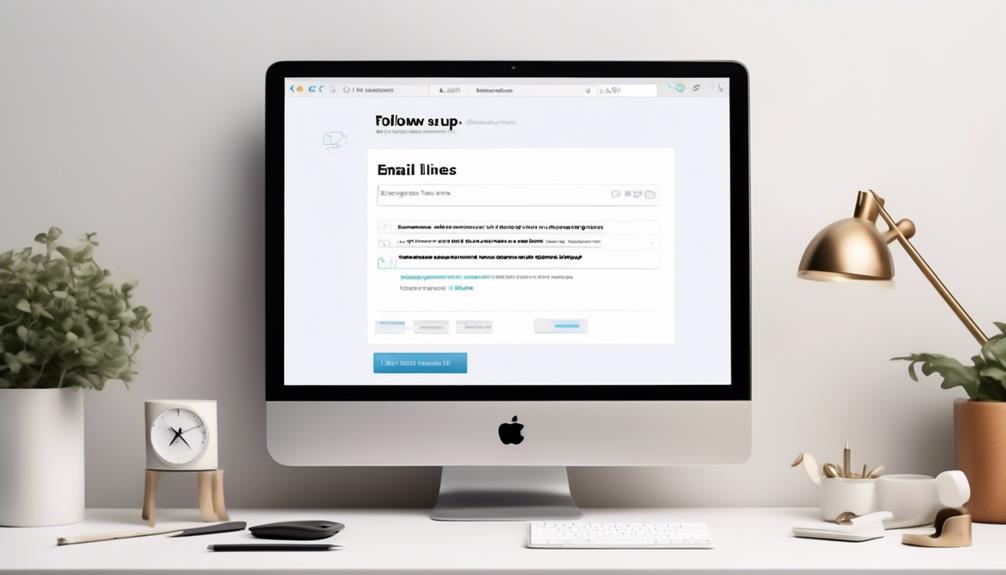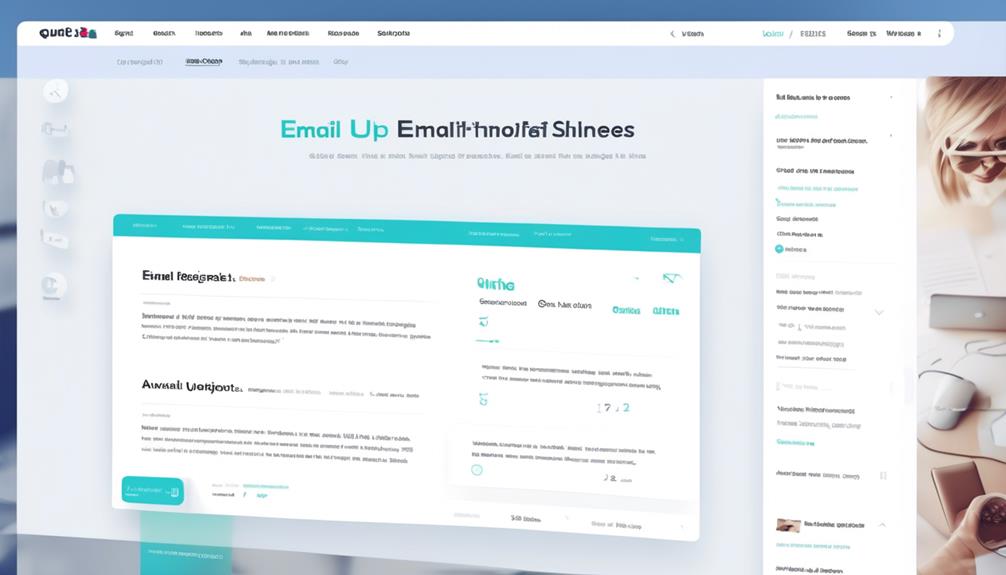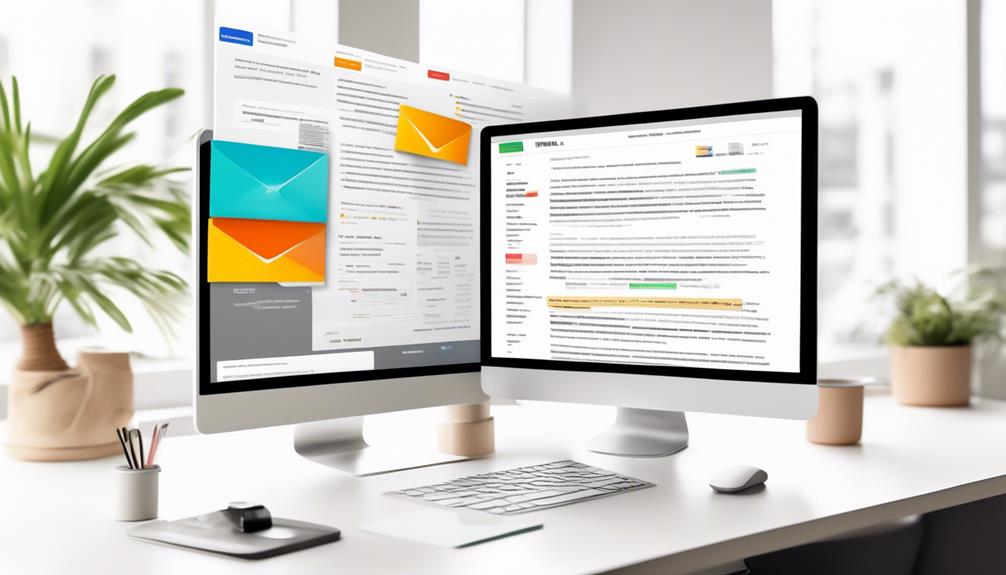So, we’re all aware of how crucial it is to keep the conversation going, and nailing down the perfect approach can be somewhat challenging. But, what if I shared with you a straightforward method to boost your reply rates without appearing overly aggressive or needy?
Well, I've got some valuable insights on the best follow-up email subject lines that can make all the difference. Let's uncover the secrets to crafting subject lines that grab attention and compel your recipients to take action.
Key Takeaways
- Captivating subject lines are essential for increasing open rates and engaging recipients.
- Personalization adds value to the recipient and increases the chances of a response.
- Creating a sense of urgency or acknowledging a missed connection can pique curiosity and prompt action.
- Maintaining a professional tone, avoiding clickbait or spam-triggering words, and crafting a well-defined call to action are important for high reply rates.
Importance of Follow-Up Email Subject Lines
Crafting compelling subject lines for follow-up emails is essential for capturing the recipient's attention and increasing the likelihood of a positive response. In the world of email marketing, the subject line is the gatekeeper to your message. It's the first thing your recipient sees, and it can make or break the success of your follow-up email.
Effective subject lines are a critical element in increasing open rates and engaging the recipient. They serve as a tool to convey the purpose of the email and entice the recipient to open it. By mastering the art of writing effective subject lines, you can significantly increase your chances of getting a response.
It's not just about getting the email opened; it's about standing out from the crowd of emails flooding the recipient's inbox. An effective subject line can prevent your email from being marked as spam and demonstrate a customer-centric approach. Ultimately, it can lead to increased conversion rates, making it a fundamental aspect of successful email follow-up strategies.
Crafting Effective Subject Lines

Now that we understand the importance of captivating subject lines in follow-up emails, let's explore the strategies for crafting effective ones that can grab the recipient's attention and prompt a positive response.
Crafting effective email subject lines is crucial for increasing open rates and capturing the interest of email recipients. To achieve this, subject lines should be personalized, adding value to the recipient.
Keeping subject lines short and attention-grabbing can also increase the chances of getting a positive response. Acknowledging a missed connection or creating a sense of urgency in the subject line can further pique recipients' curiosity and prompt them to open the email.
It's essential to maintain a professional tone and avoid clickbait or spam-triggering words in subject lines to ensure high reply rates. A/B testing can be utilized to analyze and improve the effectiveness of subject lines, helping to ensure that follow-up emails stand out in crowded inboxes and encourage recipients to engage with the content.
Best Practices for Follow-Up Subject Lines
To maximize the impact of follow-up emails, it's essential to employ best practices when crafting compelling subject lines that captivate recipients' attention and drive engagement.
When writing a subject line, it's crucial to let the recipient know what the email is about in a clear and concise manner. This not only increases the likelihood that they'll open the email but also sets the tone for effective follow-up communication.
Incorporating a sense of urgency can also prompt action, encouraging the recipient to prioritize the email and respond promptly. A well-crafted call to action can further motivate the recipient to engage with the email, making it more likely for them to take the desired next steps.
It's important to maintain a professional tone in the subject line to convey credibility and respect. Additionally, considering the next follow-up email in the subject line can help in setting expectations and organizing the follow-up sequence effectively.
Examples of Successful Subject Lines

Exploring examples of successful subject lines provides valuable insights into effective email communication strategies and can inspire compelling approaches to engaging with recipients. Crafting subject lines that make your message stand out and grab your recipients' attention is essential for increasing email open rates. A well-crafted subject line matters because it is the first thing recipients see, and it can determine whether they open your email or not. Successful subject lines often create a sense of urgency, curiosity, or a mutual connection with the recipients.
Here are some examples of successful follow-up email subject lines:
| Type of Subject Line | Example Subject Line | Why It Works |
|---|---|---|
| Personalized | "Great meeting you at [Event Name]" | Establishes a personal connection |
| Curiosity-Piquing | "Guess what we have for you" | Creates intrigue and curiosity |
| Mutual Connection | "Fellow [Alma Mater] alum here" | Establishes a sense of mutual connection |
| Urgency-Inducing | "Last chance to claim your offer" | Creates a sense of urgency to take action |
These examples demonstrate how different approaches can effectively grab recipients' attention and increase the likelihood of your email being opened.
Tips for Boosting Response Rates
Highlighting the significant impact of follow-up attempts and the average number of emails received daily, we can now explore effective strategies for boosting response rates.
Crafting compelling subject lines is vital for standing out in recipients' inboxes. Personalization, relevance, and a sense of urgency are key components for achieving high open rates. In our email sequence, the first email's subject line holds immense power in determining whether it gets opened or ignored. Utilizing email templates can be helpful, but it's crucial to customize subject lines to suit each recipient.
Understanding what makes a perfect email subject line is essential for increasing response rates. We need to know the tips and tactics for creating subject lines that prompt action from the recipients. A well-thought-out subject line can significantly impact the success of our follow-up efforts.
Frequently Asked Questions
What Are Good Professional Subject Lines for Emails?
We've found that good professional subject lines for emails are concise, personalized, and value-driven. They should create urgency without being pushy. A/B testing can help gauge effectiveness, and avoiding clickbait is crucial for building trust.
What Email Subject Lines Get the Most Opens?
We've found that subject lines acknowledging missed connections, creating urgency, and personalizing content can significantly boost open rates. It's crucial to avoid clickbait and misleading lines, as they harm engagement.
What Is a Good Follow up Email?
A good follow-up email shows persistence, adds value, and respects the recipient's time. It's personalized, concise, and creates urgency when necessary. A/B testing ensures relevance and engagement. Overall, it's an essential part of effective communication.
What Is the Most Appropriate Email Subject Line?
We believe the most appropriate email subject line is one that is personalized, concise, and action-oriented. It should establish rapport, convey relevance, and prompt the recipient to engage with the email content.
Conclusion
When it comes to follow-up emails, the subject line is your golden ticket to getting noticed. It's like a shining beacon in a sea of emails, drawing the recipient in and enticing them to open your message.
So, remember to craft your subject line with care, like a skilled artist creating a masterpiece. With the right subject line, you can capture attention, drive engagement, and ultimately achieve your desired outcome.
Master the art of the follow-up subject line, and watch your responses soar.










